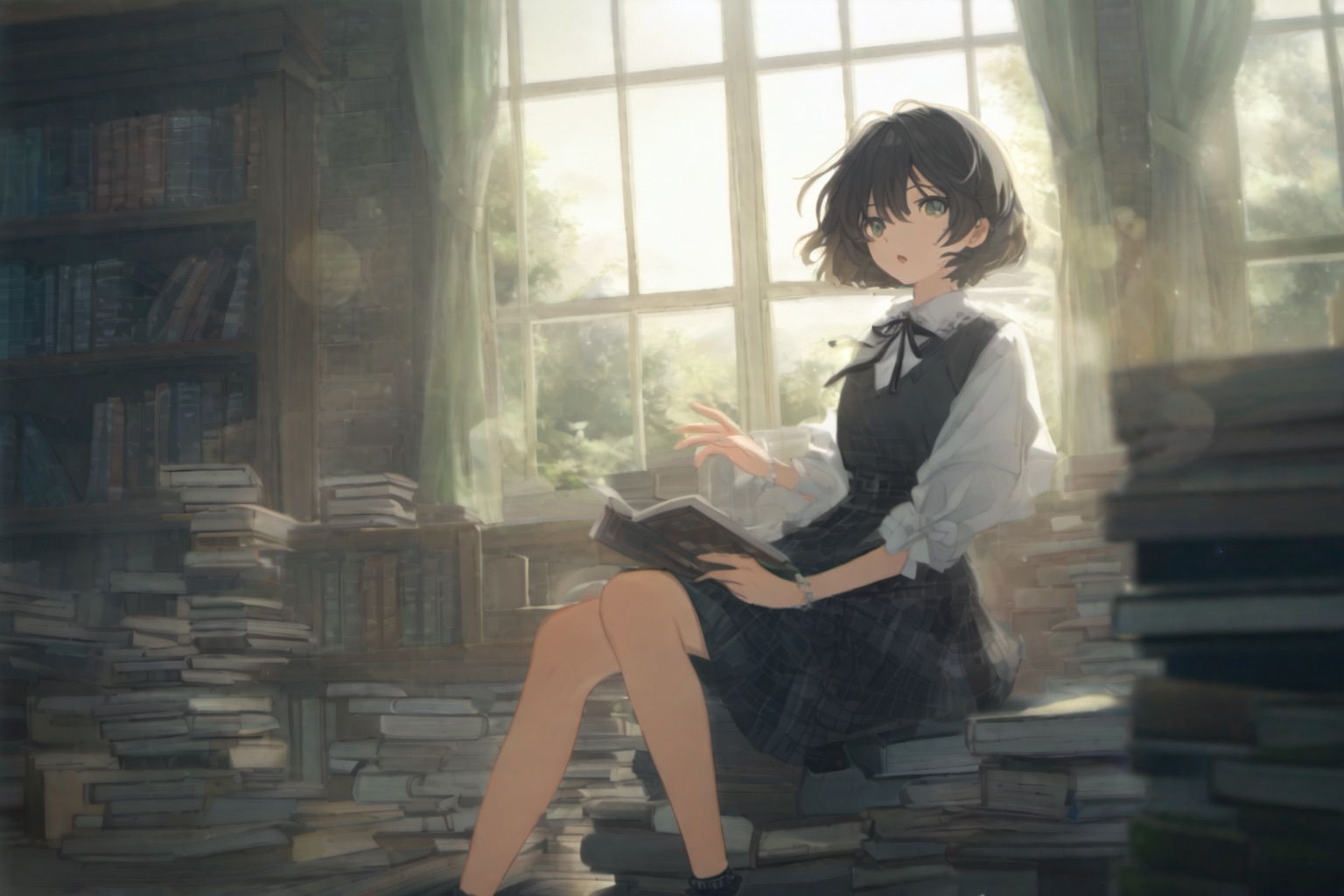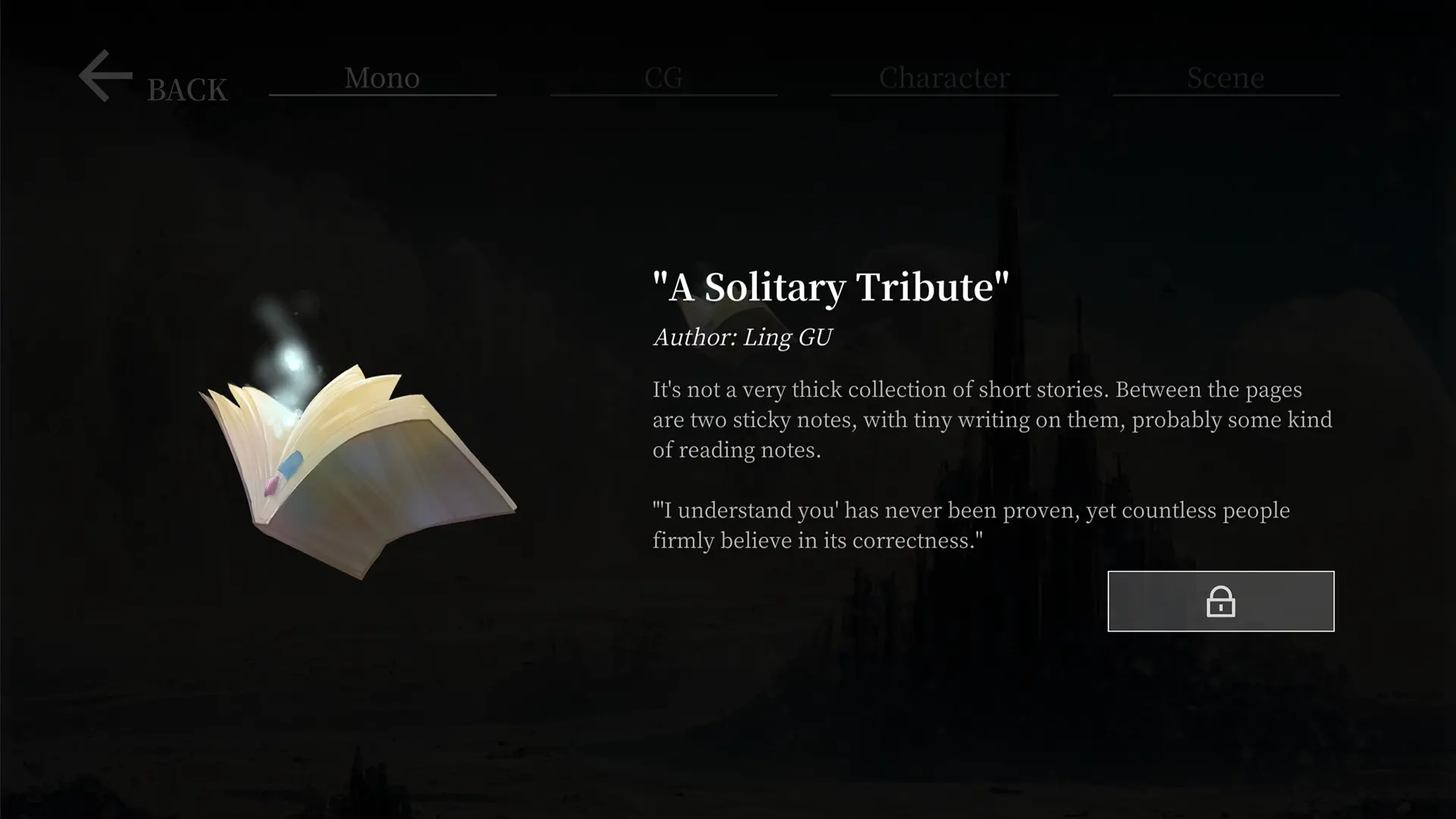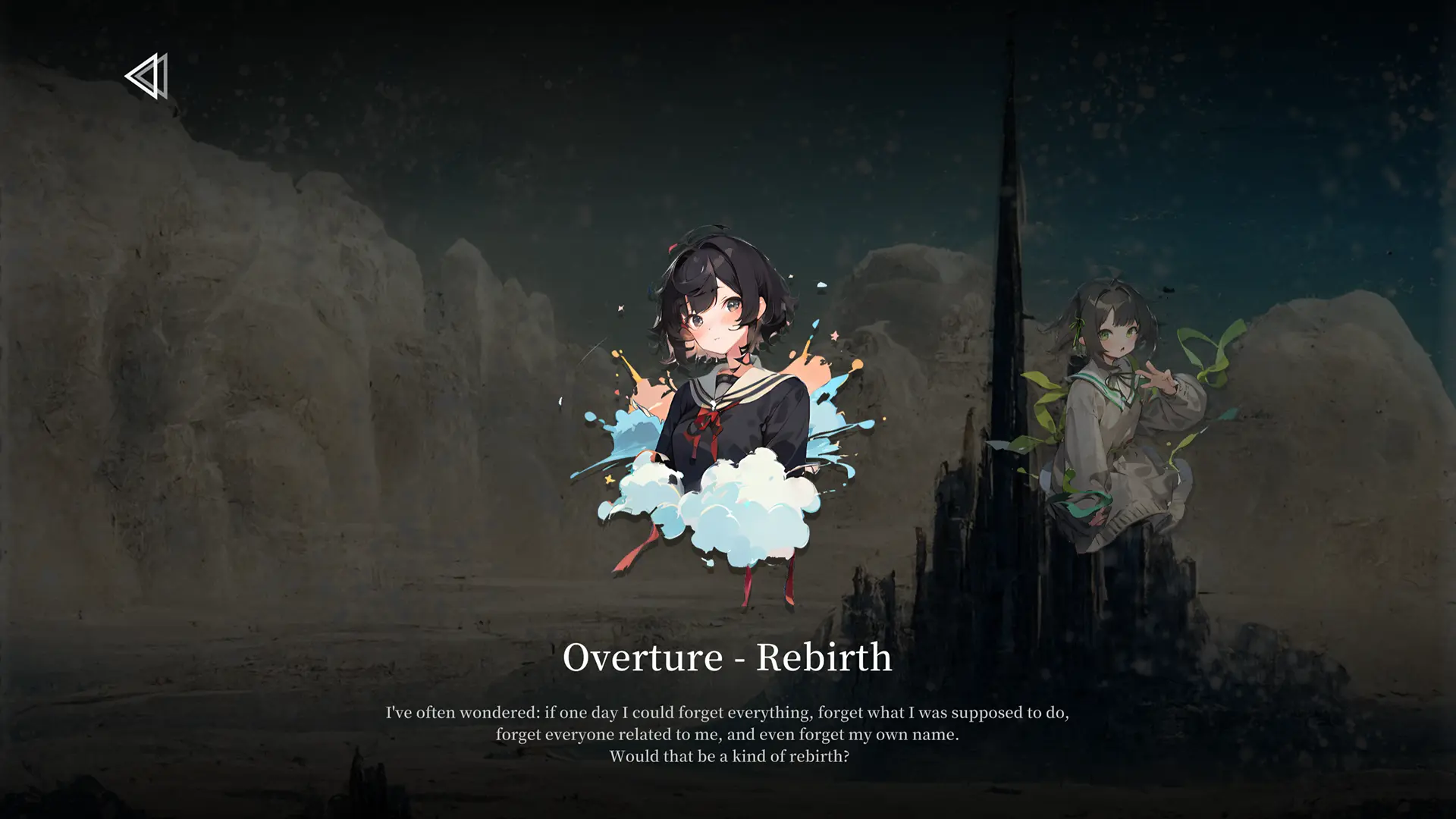Larvend: Kanata
"I trade all to etch you into my being."
Tags:
- iOS / Android
- Rhythm Game
- Narrative
Taptap link:
https://www.taptap.io/app/33587511Overview
Larvend: Kanata is an original mobile note-floating rhythm game inspired by Cytus. The game aims to provide players with a gentle and relaxing interactive experience through its selection of lyrical, mellow original Chinese instrumental music.
As the game's independent producer and developer, I took comprehensive responsibility for most aspects from concept design to final implementation, including core gameplay programming, system architecture, User Interface (UI) design, User Experience (UX) optimization, partial level design, and project management. My focus was particularly on holistic experience design, seamlessly integrating technical implementation with the game's artistic atmosphere, musical emotion, and tactile feedback to ensure players are deeply immersed in its unique emotional expression.

Narrative & Worldview Design:
Exploring a journey of Hope and Remembrance
Larvend: Kanata is far more than just a rhythm game; it is a profound narrative experience about memory, identity, and the salvation of kinship. The core story revolves around a younger sister Shi Tianling entering the "Memory Realm" of her older sister, Shi Que, who has fallen into a coma due to overwork. This "Memory Realm" is a materialized world of consciousness, woven from Que's fragmented memories. However, in the comatose state, Que's memories are in disarray, leading to chaos and disorder within the realm itself: players witness concrete scenes of disarray such as scattered books, rain falling backward, and burned-out streets, hinting at fragmented and unbalanced memories.
My design goal was to create an atmosphere and experience that is both hopeful and dreamlike for the player. Despite the visual desolation and disorder within the game world, I aimed to convey an empowering message through the overall art and interactive design: "Starting from where you stand, piece by piece, collect memories, and you will eventually break free from this confinement." This "broken beauty" in visuals perfectly echoes the "reconstruction" of the core gameplay, elevating the game's artistic and emotional depth.
"Memory Realm" Floating Islands and Thematic Division
The Memory Realm is conceptually designed as a series of floating island clusters, with each island representing a unique theme (e.g., family, friends, self-identity, challenges, and struggles). Each island corresponds to a chapter in the game, and the musical style within each chapter is differentiated according to its theme. This distinction in musical genres further reinforces the thematic expression, guiding players through different emotional segments.
"Memory Restoration Degree" as a Global Progress Bar
The game's progression is visually represented by a "Memory Restoration Degree" percentage value. Playing songs symbolizes the process of collecting, organizing, and reconstructing memories. Higher song scores indicate more complete memory restoration, causing the progress to increase faster. This rising value not only signifies Que's gradual recovery of consciousness but also brings about direct visual changes: the background of the main interface—originally a panoramic view of the floating islands—will gradually develop cracks as progress increases, symbolizing the increasing instability of the Memory Realm. The moment the Memory Realm completely shatters signifies Que's awakening. This cleverly implies that Que no longer needs the protection of the virtual realm and can finally emerge from the illusion to face reality.
"Memory Items" for Fragmented Narrative
As the Memory Restoration Progress increases, players can randomly collect "Memory Items" during gameplay. These items are things Que once cherished, and each represents a past memory. Players can read and view these Memory Items to enrich Que's past and characterization, piecing together a complete character profile through fragmented narratives. For instance, a dried Gypsophila bookmark reveals a heartwarming story of Tianling gifting it to Que on her 14th birthday. This interactive storytelling allows players to understand the characters more deeply as they collect, enhancing immersion.
Core Gameplay & Level Design:
Crafting a Fluid and Easy-to-Play Experience
Flexible Judgment Window
I categorized judgment accuracy into Precise (within 60ms), Deviated (61-200ms), and Miss (beyond 200ms). Compared to traditional rhythm games, this more lenient judgment mechanism was chosen to accommodate the non-fixed spawning locations of notes across the screen. This design provides players with ample time for sight-reading and finger movement, effectively reducing frustration from large operational displacements and improving the overall perceived difficulty and player-friendliness, aligning with the game's goal of offering a "relaxed experience."
Progressive Difficulty Curve
As one of the level designers for the game, I crafted at least three difficulty levels
for each song: Light, Order, and Chaos, to cater to players of
varying skill levels. The Light and Order charts primarily feature Tap and Hold notes,
intentionally reducing the cognitive load for note type identification and simplifying
interaction complexity, aiming to provide a friendly, progressive learning path for new players.
The Chaos charts are designed for more experienced players, introducing Flick notes,
which bring greater variety, enjoyment, and challenge. For core players seeking the
ultimate challenge, I also designed Error difficulty charts, offering intense
rapid-fire combinations and complex layouts for a thrilling, high-energy experience.
Two-Dimensional Playfield Flow Design
Given the full-screen, floating nature of the notes, level design required careful consideration of the entire two-dimensional plane of motion. I heavily factored in the common player habit of two-finger operation. The vast majority of charts were designed based on a "two-finger" assumption , meticulously planning the placement of simultaneous presses (two hands pressing at once) and interleaved actions (alternating hand presses). Through iterative testing and adjustments, I minimized instances requiring players to awkwardly switch hands or have their hands "clash," ensuring a smooth and comfortable playing experience.
UI/UX Design & Aesthetic Style:
Guiding and Immersive Visual Language
Visual Simplicity & Spatial Awareness
I extensively used clean geometric shapes and minimized hard edges in the UI to ensure that elements provide necessary information while maximizing the player's visual field, avoiding interference with the core note-floating gameplay area. This design aims to create a sense of vast, yet clear, "Memory Realm" space for the player.
Seamless Transitions & Unified Interaction
I committed to eliminating loading screens between interfaces, instead employing fade-in/fade-out transparency and smooth, continuous animations for transitions. This seamless flow not only enhances the user experience but also reinforces the immersive feeling of "entering the Memory Realm." Furthermore, chapter selection, song selection, the main menu, and settings all utilize horizontal swiping as an interaction method, with primary content filling the entire screen. This choice contributes to a unified design aesthetic and further boosts overall operational fluidity and intuitiveness.
Intuitive and Meaningful Note Design
To make different note types not only functionally discernible but also visually imbued with narrative hints, I designed them with distinct characteristics. Flick notes were designed with a rhombus shape, conveying the action of "sliding" and "cutting" through their sharp visual characteristic. Tap/Hold notes, conversely, adopted a circular shape with different colors. Hold notes continuously rotate upon appearance, cleverly hinting at their "long press" or "continuous" nature, guiding players to sustain the action. In contrast, Tap notes appear more crisply and directly, clearly conveying the "quick tap" information.
Immersive Visual Feedback
I designed distinct visual feedback for successful hits and misses: When a note is successfully hit, it shatters and fades out, accompanied by paper-like particle effects and soft light effects, along with ripple-like diffusion effects. This "shattering" sensation not only offers a beautiful visual treat but also subtly alludes to the collection and reconstruction of "memory fragments" within the game's world, integrating operational feedback into the narrative. Unhit notes also shatter, but they fall downwards and fade out due to gravity, like "broken kites." This design symbolizes "irrecoverable" emotions, deepening the player's understanding of the game's themes.
Game Philosophy:
A Question of Memory and Identity
The game's subtitle, "I trade all to etch you into my being.", reveals its central theme—a deep exploration of "memory and identity." Through Larvend: Kanata, I aimed to pose the question: "If my past were completely erased, how should I live?" Conventional wisdom holds that identity is formed by memories; our past dictates who we are now and shapes our future. But for someone who has lost their memory, is recovering it the ultimate solution? Would imposing a stranger's life not deny the present "me" the right to live as a new person?
Therefore, in the game's ending, when Shi Que decides which memories to bring out of the Memory Realm, she chooses only "her sister's name," seeking nothing else. This choice not only serves as the ultimate affirmation of sibling affection but also represents a philosophical contemplation of "letting go of the past and bravely facing the future." The game aims to guide players through an emotional arc from initial confusion, to the hope brought by collecting memories, culminating in a sense of release and profound emotion born from new self-choice, emphasizing that even with memories erased, one can still build a new existence through core love and courage.
"I am willing to remember you at the cost of forgetting everything else." That's the story I want to tell with it.



